
Weddings
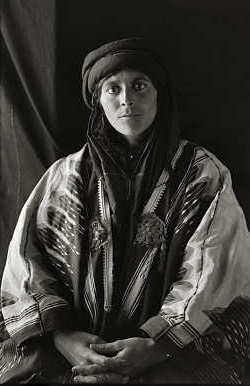
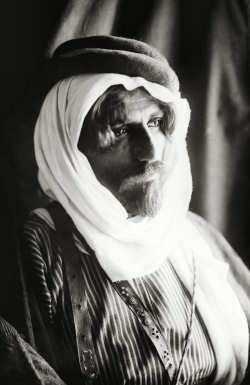
Bedouin Wedding, Bride and Bridegroom
Source: American Colony: Traditional Life and Customs
The betrothal of a girl is a mere mercantile transaction between the girl's
father and the proposed bridegroom. It is only when this is completed that the
girl is made acquainted with the transaction. There is then a three-days' grace.
This is spent by the girl, according to the rules of some tribes, in a tent near
the father's tent, after she has been sprinkled with the blood of a sheep
sacrificed for the occasion; or, according to other tribal customs, it is spent
by her hidden amidst the mountains. (Source:
Picturesque Palestine, vol. 4, p.
69.)
Marriage Ceremony, Cairo
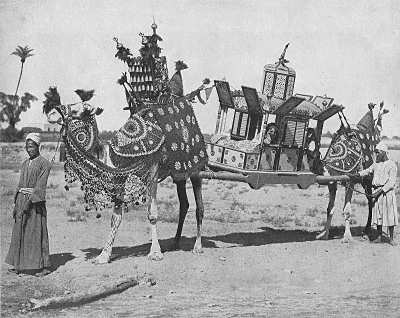
Source: Earthly Footsteps of the Man of Galilee, p. 78
The Egyptian girl is generally married in her twelfth or thirteenth, and sometimes as early as her tenth year. Before the wedding the bride is conducted in gala attire, and with great ceremony to the bath. The procession is called "Zeffet et Hammam." Musicians with hautboys and drums head the procession. Pairs of married friends and relatives of the bride follow, and after these come a number of young girls. The bride is usually enveloped from head to foot in a cashmere shawl. On the head she wears a small cap or crown of pasteboard. The procession is followed by another body of musicians. Hideous shrieks of joy greet the bride by women of the lower classes. The bride is then conducted to the house of her husband with the same formalities. He has not seen his bride until the wedding day. The match has been made by a relative or by a professional matchmaker. He is required to pay a bridal portion. (Source: Earthly Footsteps of the Man of Galilee, p. 78.)
Peasant Wedding
Miss Edwards thus describes a wedding procession: "Here we fall in with a wedding procession consisting of a crowd of men, a band and some three or four hired carriages full of veiled women, one of whom was pointed out as the bride. The bridegroom walks in the midst of the men who seemed to be teasing him, opposing his progress; while high above the laughter, the shouting, the jingle of tambourines and the thrumming 'darabukkehs' was heard the shrill squeal of some instrument that sounded exactly like a bagpipe." (Source: Earthly Footsteps of the Man of Galilee, p. 78.)
Nazareth Bride
The inhabitants of Nazareth, like those of Bethlehem, are deservedly famed for their personal beauty. I was fortunate enough to be present at the wedding festivities of a wealthy landed proprietor in the town . . . . I was greatly struck by the fine features of many of the women and the noble bearing of the men . . . . In the wedding festivities at Nazareth, of which I have already spoken, the bride was brought from near Kefr Kenna. The innumerable guests who thronged the house for a week, served to illustrate and to account for the inadequacy of the supplies provided for a similar festivity in the time of our Lord. (Source: Those Holy Fields, pp. 185, 193.)
See Houses, Marketplace, Tombs and Burial Customs, Women and Clothing, or Women and Work
At BiblePlaces, see John 2
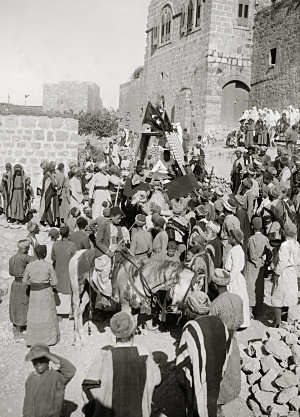 Source:
Source: 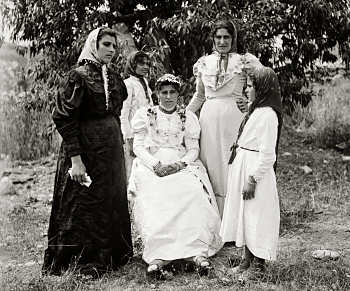 Source:
Source: